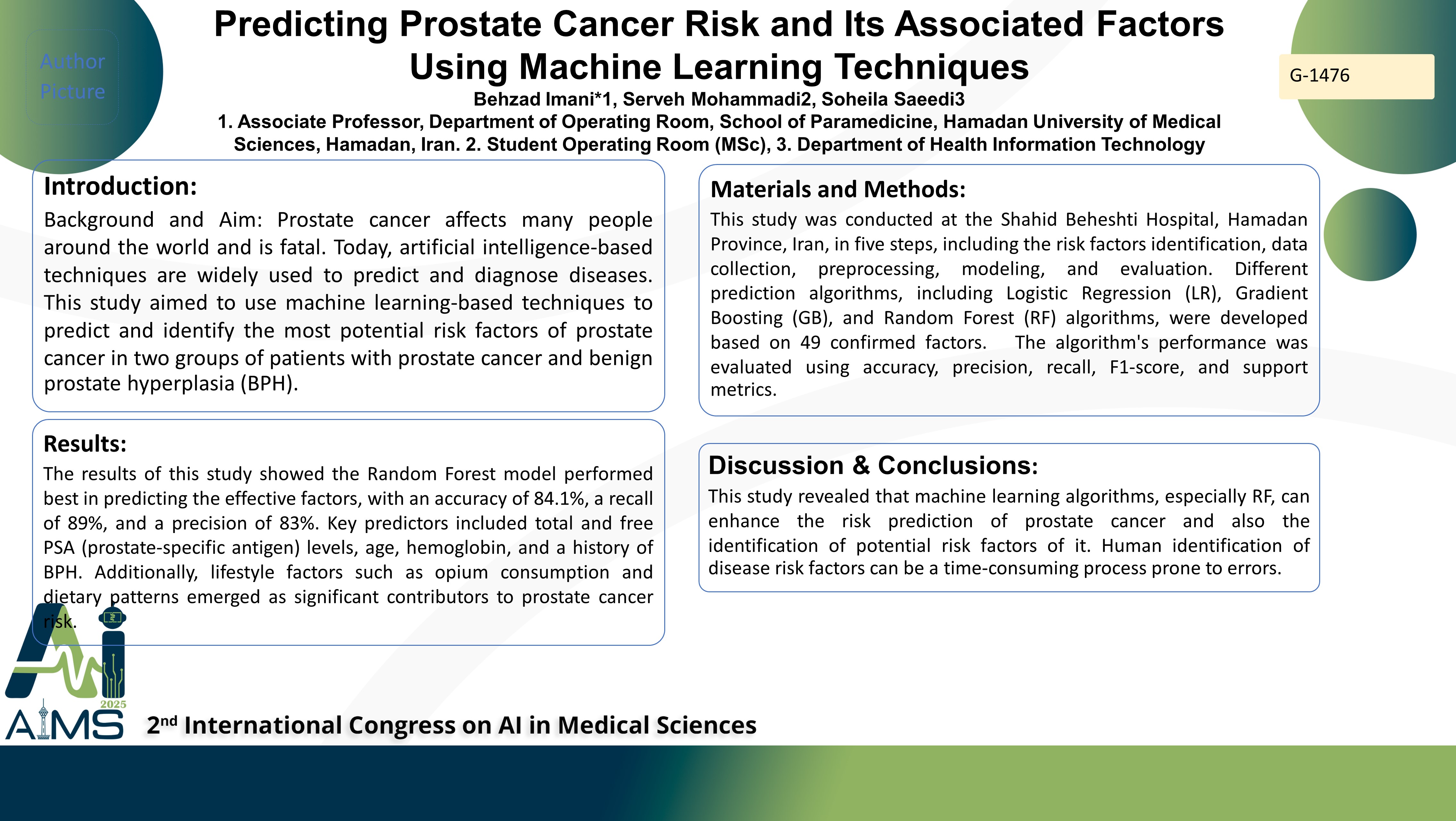پیش بینی خطر سرطان پروستات و عوامل مرتبط با آن با استفاده از تکنیک های یادگیری ماشینی
کد: G-1476
نویسندگان: Dr. Behzad Imani * ℗, Soheila Saeedi, Serveh Mohammadi
زمان بندی: زمان بندی نشده!
برچسب: سیستم های تصمیم یار بالینی
دانلود: دانلود پوستر
خلاصه مقاله:
خلاصه مقاله
Background and Aim: Prostate cancer affects many people around the world and is fatal. Today, artificial intelligence-based techniques are widely used to predict and diagnose diseases. This study aimed to use machine learning-based techniques to predict and identify the most potential risk factors of prostate cancer in two groups of patients with prostate cancer and benign prostate hyperplasia (BPH). Patients and Methods: This study was conducted at the Shahid Beheshti Hospital, Hamadan Province, Iran, in five steps, including the risk factors identification, data collection, preprocessing, modeling, and evaluation. Different prediction algorithms, including Logistic Regression (LR), Gradient Boosting (GB), and Random Forest (RF) algorithms, were developed based on 49 confirmed factors. The algorithm's performance was evaluated using accuracy, precision, recall, F1-score, and support metrics. Results: The results of this study showed the Random Forest model performed best in predicting the effective factors, with an accuracy of 84.1%, a recall of 89%, and a precision of 83%. Key predictors included total and free PSA (prostate-specific antigen) levels, age, hemoglobin, and a history of BPH. Additionally, lifestyle factors such as opium consumption and dietary patterns emerged as significant contributors to prostate cancer risk. Conclusion: This study revealed that machine learning algorithms, especially RF, can enhance the risk prediction of prostate cancer and also the identification of potential risk factors of it. Human identification of disease risk factors can be a time-consuming process prone to errors.
کلمات کلیدی
Prostatic Neoplasms, Machine Learning, Cancer Risk
